Quelques principes de base de ce cours.
1. Quel accent?
Autant en parler tout de suite, parce que la question va venir très vite, j’en ai l’habitude.
J’utiliserai la prononciation dite “standard”, telle qu’elle a été définie par les linguistes du YIVO, et telle qu’elle est enseignée aujourd’hui partout où l’on enseigne le yiddish dans le monde.
Avantage principal: on prononce comme c’est écrit, on écrit comme on prononce. L’orthographe est strictement phonétique (sauf pour les mots d’origine hébraïque, mais c’est une autre histoire; inutile de se compliquer la vie pour le moment)
Avantage secondaire: aucun dialecte n’est meilleur qu’un autre car on ne parlait le yiddish standard nulle part.
Car, non, ce n’est pas du litvak, même si ça s’en rapproche.
Naturellement, chacun peut, s’il le souhaite continuer à pratiquer le dialecte familial. C’est un bonheur et je le fais moi aussi.
Pour simplifier, dans le yiddish de Pologne, que la plupart des ashkénazes de France ont pu connaitre, le “U” (son “ou” français) se prononce “I” et le son “O” se prononce “U”. C’est pourquoi nos amis séfarades nous appellent les “vous-vous”. Si nous étions majoritairement originaires de Lituanie, ils devraient nous appeler les “vos-vos”.
2. Tous les textes sont donnés en quatre versions: français, anglais (oui, nous sommes devenus un groupe mondial), yiddish en caractères latins, yiddish en caractères hébraïques. Pour la transcription en caractères latins, nous suivons les règles établies par le YIVO. (cf un tableau complet ici http://www.yiddishwit.com/transliteration.html)
3. Pour chaque mot, je joins une image avec le texte en caractères yiddish et en caractères latins.
4. Je joins aussi un fichier son “SoundCloud” qui vous permet d’entendre la prononciation “standard” de ces mots.
Et après ces longs préliminaires, au travail!
Some basic principles of this course.
1. Which accent?
Let’s talk about it immediately, because the question will arise very quickly, I’m used to it.
I will use the so-called “standard” pronunciation, as defined by the YIVO linguists, and as it is taught today wherever Yiddish is taught in the world.
Main advantage: we pronounce as it is written, we write as we pronounce. Spelling is strictly phonetic (except for words of Hebrew origin, but it’s another story, needless to complicate for the time being)
Side benefit: No dialect is superior to another because there was no standard Yiddish spoken anywhere.
And, no, it’s not litvak, even if it’s close to it.
Naturally, everyone can, if she wishes, continue to practice his family dialect. It’s a bliss and I do it too.
To put make it simple, in the Yiddish of Poland, the sound “U” is pronounced “I” and the sound “O” is pronounced “U”.
2. All texts are given in four versions: French, English (we are a global group now, aren’t we?), Yiddish in Latin characters, Yiddish in Hebrew characters. For transcription in Latin characters, we follow the rules established by the YIVO. (see a complete table here http://www.yiddishwit.com/transliteration.html)
3. For each word I enclose an image with the text in Yiddish and Latin characters.
4. I also attach a sound file “SoundCloud” that allows you to hear the “standard” pronunciation of these words.
And after these long preliminaries, at work!
JE = I = IKH = איך
TU = YOU = DU = דו
IL = HE = ER = ער
ELLE = SHE = ZI = זי
IL (neutre) = IT = ES = עס
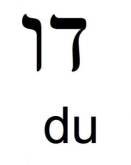
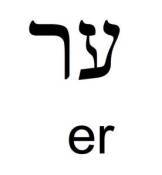
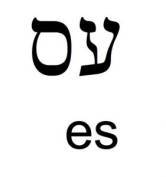
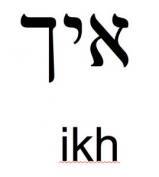
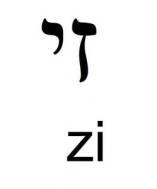
Pour aujourd’hui, essayez de mémoriser deux caractères yiddish: le Yud, une petite lettre en forme d’apostrophe, et le Vov, une lettre verticale en forme de bâton de Moïse.
For today, try to memorize two Yiddish letters: the Yud, a small letter in the form of an apostrophe, and the Vov, a vertical letter in the form of Moses’ staff.
Et pour en savoir plus sur ces deux lettres, consulter les excellents posts de notre amie Regine Bloch-Fiderer:
And to learn more about these two letters, see the excellent posts of our friend Regine Bloch-Fiderer https://www.facebook.com/groups/YiddishPourLesNuls/permalink/506590099523373/
https://www.facebook.com/groups/YiddishPourLesNuls/permalink/497273230455060/
Le fichier son de la leçon/ The soundfile
https://soundcloud.com/user-369999034/yiddish-lecon-1
